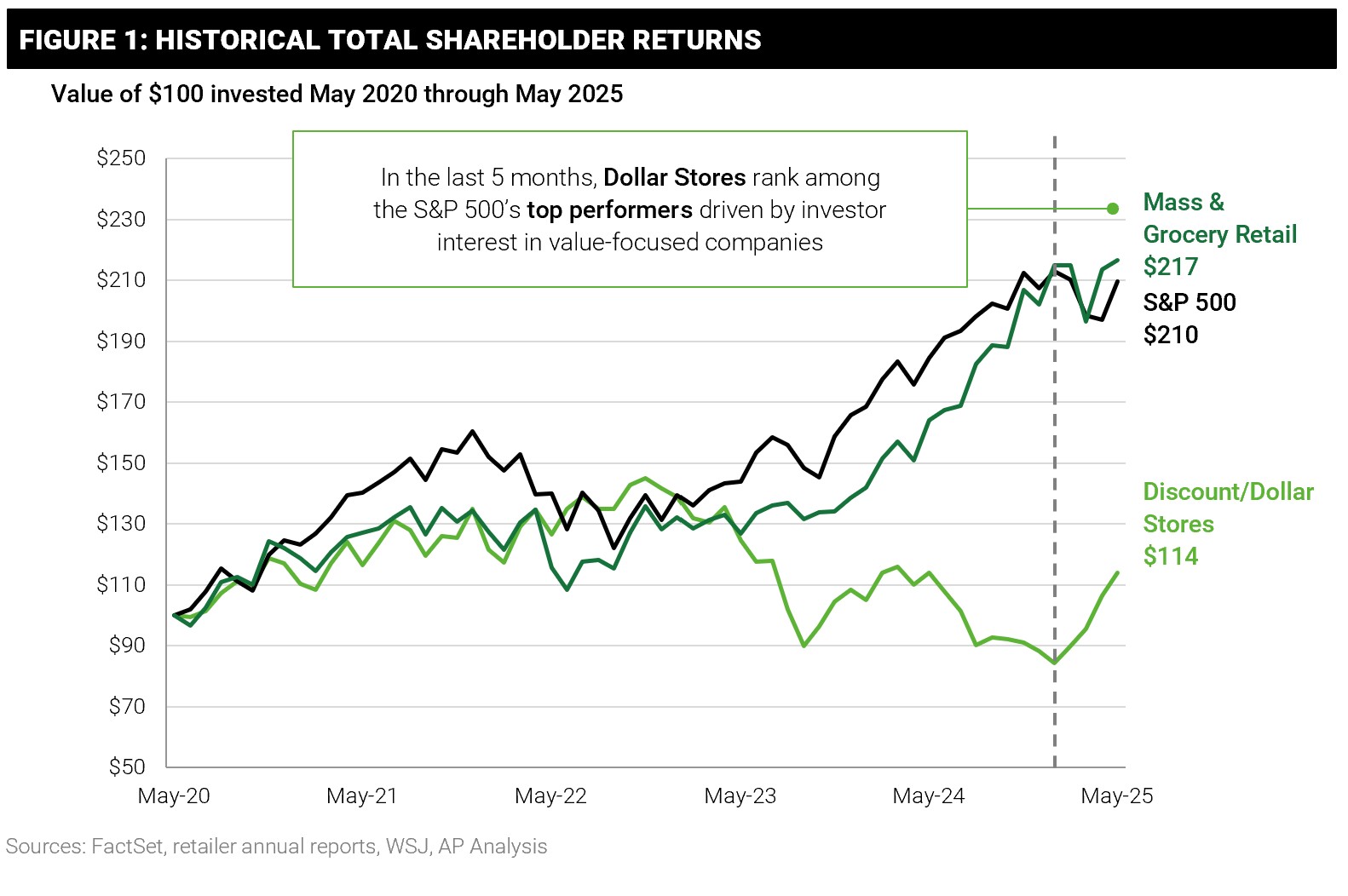Bryan Eshelman
New York
Rising economic uncertainty, coupled with stagnating consumer spending, could accelerate the dollar store channel’s recent growth trajectory as cost-conscious shoppers flock to lower-cost alternatives. But dollar channel executives shouldn’t expect mass retailers and grocers to cede share without a fight.
The proof points go beyond consumer behavior. Dollar channel stocks have recently outperformed many retail peers in the S&P500, demonstrating investor interest in value-focused companies. Having lagged in comparison to other retail segments over a five-year horizon, dollar store companies may be positioned to seize the momentum offered by the current market conditions to deliver value to customers and shareholders alike.

What’s on the consumer’s mind? Value first and foremost
A recent Associated Press-NORC poll indicated that most U.S. adults are at least somewhat concerned about the cost of groceries, with approximately half responding that grocery prices are a major source of stress. As families enter the annual back-to-school (BTS) season, similar anxieties are reflected in an ICSC poll where 91% of shoppers reported that higher prices will impact their shopping behavior.
As consumers grapple with inflation, stagnant wages, and financial uncertainty, they are trading down in many spending categories by chasing lower prices, delaying big-ticket purchases, and hunting for lower-cost alternatives as households seek to stretch their budgets.
Winner takes all?
Does the dollar store channel have what it takes to capitalize on the shift in trends and traffic that the headwinds are blowing in its direction? Can they retain new customers attracted to their value story once consumers feel better about the economy?
On the other hand, how can mass retailers and grocery chains protect their share and counter the dollar channel value play during uncertain times?
The competitive landscape...disrupted
Dollar stores excel in two areas: price and breadth of locations. A recent AlixPartners’ consumer survey showed increased household penetration, shopping frequency, and basket size across core categories, including grocery, health and beauty, and home goods, underscoring the dollar channel’s appeal during an economic downturn. Responses demonstrated widespread uncertainty about both macro and personal economic conditions, yet consumers indicated the dollar store channel is where they expect to reduce spending the least within retail.
While attractive prices and convenient locations will get shoppers in the door, do they have what it takes to keep them? Compared to mass retailers and grocers, the dollar channel misses the mark when it comes to breadth of categories, variety in a category, product availability, store cleanliness, and customer service. Specialty retailers, also limited in scope, outperform them in lower-importance but highly differentiating attributes such as experience and special occasion goods.
Dollar channel leaders face dual challenges: maintain the low-price value proposition while addressing gaps in the shopping experience that limit customer stickiness and share of wallet. However, if careful investment choices are made, these don’t have to be opposing forces.
Here are five levers dollar channel executives can pull to build on the current momentum:
Although current market turbulence offers the dollar channel an opportunity to gain ground, mass retailers and grocers still possess scale and structural advantages that will be challenging for dollar players to match. To sustain their edge, these retailers should double down on core operational fundamentals while selectively adopting proven strategies from the dollar channel’s value-driven playbook.
Dollar stores need to upgrade assortment, environment & experience, and service while doubling down on price and quickly grabbing new category opportunities. Mass retailers and grocers should sharpen pricing, offer competitive pack sizes and value sections, and use scale and omnichannel reach to hold their ground. Disciplined operations and smart merchandising offerings will keep both sides ready for shifting market conditions.